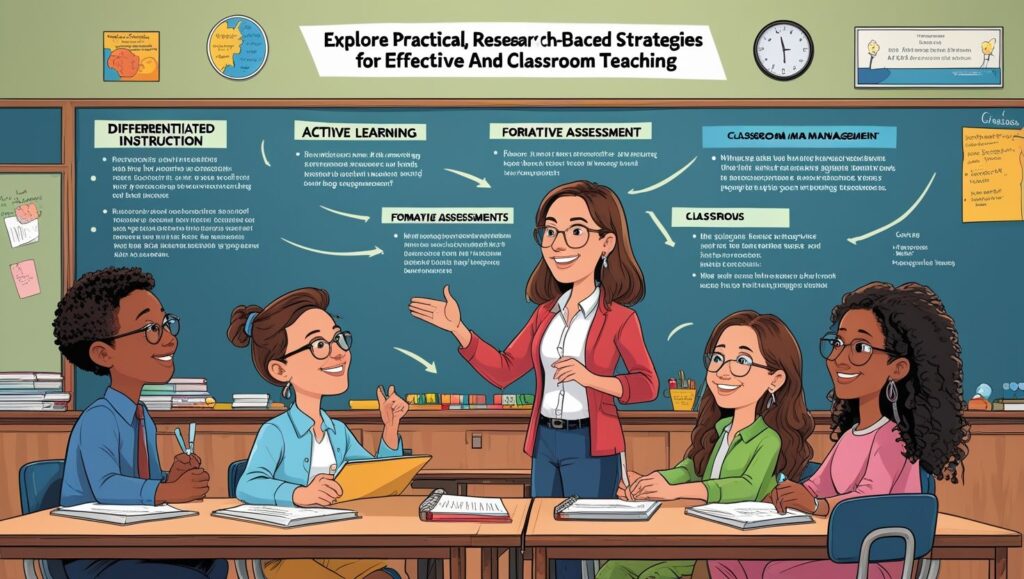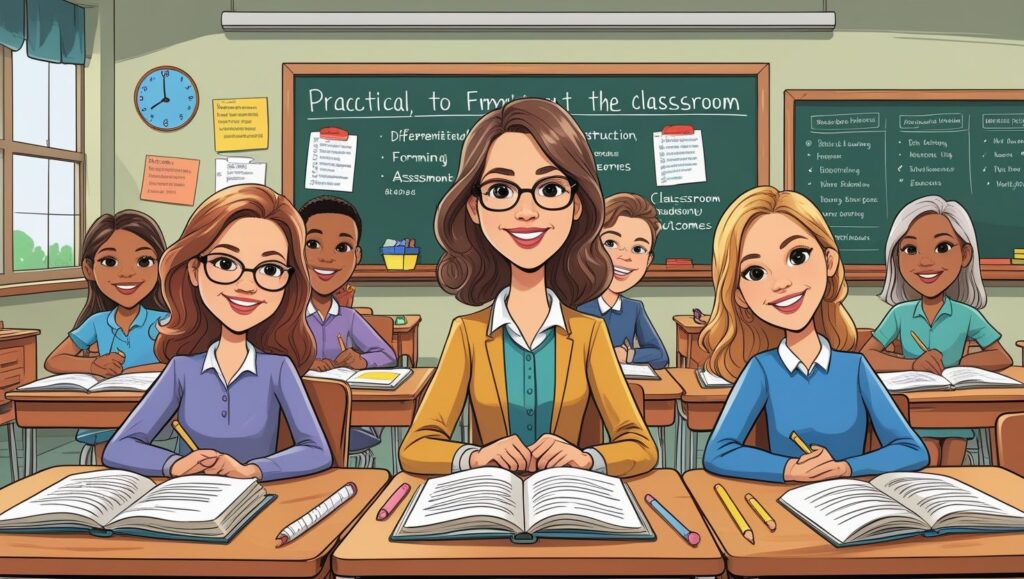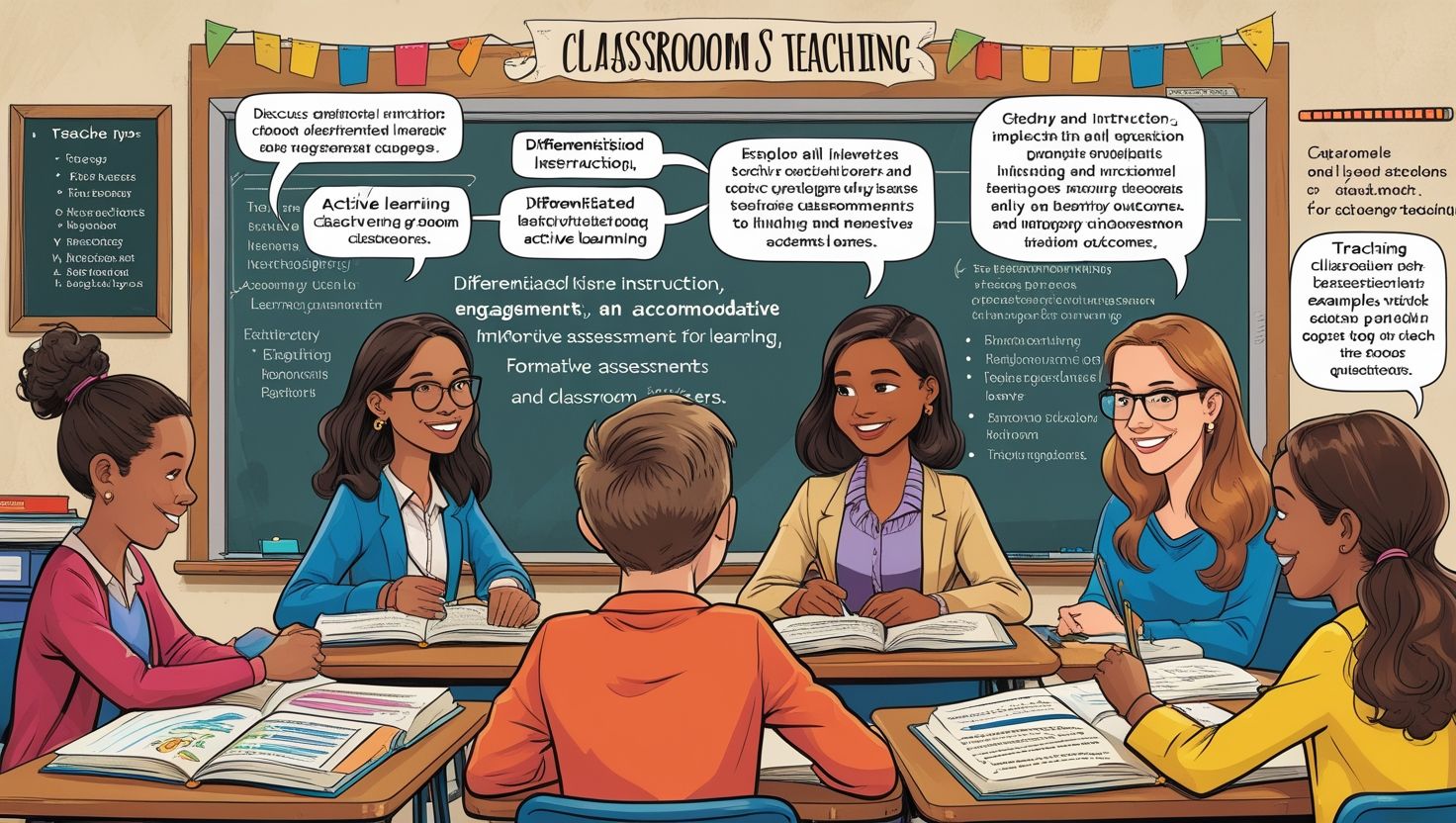Introduction
Practical Strategies for Effective Teaching, Effective classroom teaching requires a combination of planning, adaptability, and student-centered approaches. Teachers must employ diverse strategies to cater to different learning styles, maintain engagement, and ensure comprehension. Practical techniques such as differentiated instruction, active learning, and formative assessments can significantly enhance student outcomes. This article explores research-backed strategies that educators can implement to create a dynamic and inclusive learning environment. By focusing on real-world applications, teachers can foster critical thinking, collaboration, and long-term retention of knowledge.
Differentiated Instruction for Diverse Learners
Every classroom consists of students with varying abilities, interests, and learning preferences. Differentiated instruction allows teachers to tailor lessons to meet these diverse needs. Strategies include tiered assignments, flexible grouping, and choice boards. For example, in a reading lesson, advanced learners might analyze complex texts, while others work on comprehension exercises. Incorporating visual, auditory, and kinesthetic activities ensures all students engage meaningfully. By adjusting content, process, and product, teachers can support individual growth while maintaining high expectations for all.
Active Learning Techniques
Active learning shifts the focus from passive listening to student participation. Techniques such as think-pair-share, peer teaching, and problem-based learning encourage deeper understanding. For instance, in a science class, students can conduct experiments rather than just reading about them. Collaborative projects and debates also promote critical thinking and communication skills. Teachers should create opportunities for hands-on experiences, discussions, and real-world problem-solving. This approach not only enhances retention but also makes learning more enjoyable and relevant.

Formative Assessments for Continuous Feedback
Unlike summative assessments, formative assessments provide real-time feedback to guide instruction. Quick checks like exit tickets, polls, and one-minute essays help teachers gauge understanding and adjust lessons accordingly. Digital tools like Kahoot! and Google Forms make assessments interactive. Regular feedback helps identify learning gaps early, allowing timely interventions. Teachers should use a mix of verbal, written, and observational assessments to monitor progress and personalize support.
Classroom Management for a Positive Environment
A well-managed classroom minimizes disruptions and maximizes learning time. Clear expectations, consistent routines, and positive reinforcement foster respect and discipline. Strategies like proximity control, nonverbal cues, and behavior charts maintain order without excessive reprimands. Building strong teacher-student relationships also reduces conflicts. A supportive environment where students feel valued encourages participation and reduces behavioral issues.
Implementing Effective Teaching Practices
Successful teaching relies on flexibility, innovation, and responsiveness to student needs. By integrating differentiated instruction, active learning, formative assessments, and strong classroom management, educators can create an engaging and effective learning space. Continuous reflection and professional development ensure teachers stay updated with best practices, ultimately leading to improved student achievement and a lifelong love for learning.

Conclusion
Effective classroom teaching is an evolving process that requires adaptability, innovation, and a deep understanding of student needs. The strategies discussed—differentiated instruction, active learning, formative assessments, and strong classroom management—work synergistically to create an engaging and inclusive learning environment. By tailoring lessons to diverse learners, teachers ensure that every student has the opportunity to succeed. Active learning techniques foster critical thinking and collaboration, making lessons more dynamic and memorable. Formative assessments provide real-time insights into student progress, allowing educators to adjust instruction for maximum impact. Meanwhile, a well-managed classroom establishes a structured yet supportive space where students feel motivated and respected.
However, the implementation of these strategies requires ongoing reflection and professional growth. Teachers should continuously seek feedback, experiment with new methods, and stay updated on educational research. Collaboration with colleagues can also provide fresh perspectives and shared solutions to common challenges. Additionally, leveraging technology—such as digital assessment tools, interactive simulations, and multimedia resources—can further enhance engagement and accessibility.
Ultimately, the goal of these practical strategies is not just to improve academic performance but also to nurture lifelong learners who are curious, confident, and capable of independent thinking. A student-centered approach, combined with intentional teaching practices, transforms classrooms into vibrant hubs of discovery and growth. As educators refine their techniques, they empower students to take ownership of their learning, preparing them for success both inside and beyond the classroom. By committing to these evidence-based strategies, teachers can make a lasting impact on their students’ educational journeys, fostering a love for learning that endures well into the future.

1 thought on “Practical Strategies for Effective Teaching”